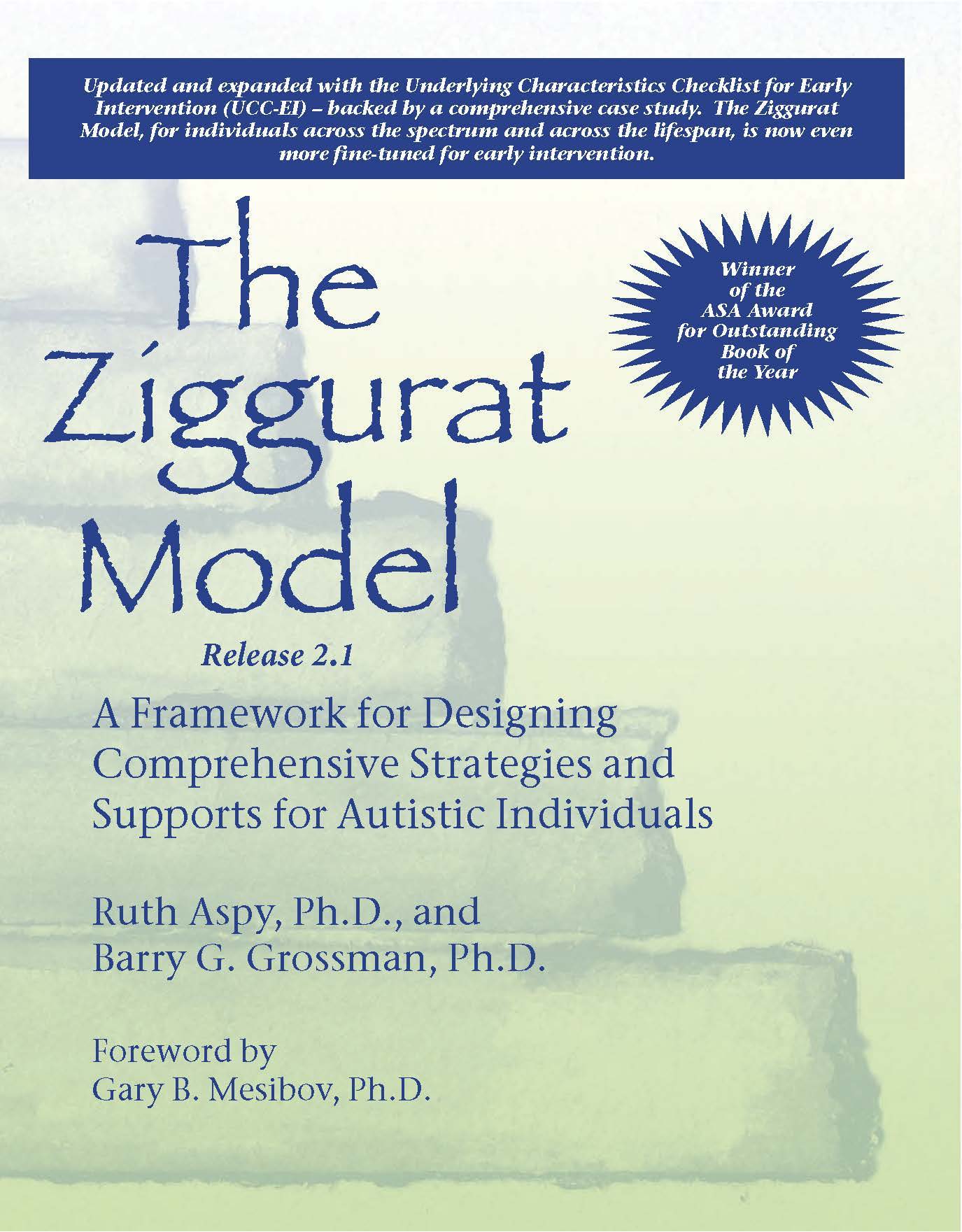What is the Ziggurat Model
The Ziggurat Model is used in home, school, mental health, and other therapeutic settings. The Ziggurat Model is also used by autistic adolescents and adults as a self-help strategy.
Buy our transformative on-demand 8-session Ziggurat Model course for just $99! (regular price $350)
Pay $99! Click "Buy" below and use coupon code “zigin2025” at checkout. Sale ends soon!

We want to do everything we can to help you on your journey. Try our first lesson for free!

This framework is designed to meet underlying needs while capitalizing on strengths.
Create effective plans at home
Develop effective Individualized Education Plans that address priorities and lead to change
Complete Functional Behavior Assessments and Behavior Intervention Plans that address the source of the "behaviors"
Develop meaningful assessment recommendations
Transition planning
Workplace planning
Consultation
The Ziggurat Model helps staff to complete multiple components of the IEP. The framework helps school staff to remain in compliance with federal and state guidelines. Specifically, recent trends in special education law emphasize the use of scientifically based research approaches along with a focus on response to intervention (RTI). Additionally, there is a strong push for incorporating positive behavioral interventions and supports (PBIS) based on a functional behavioral assessment. The Ziggurat Model is consistent with these practices.
Facilitates effective collaboration with parents and staff
Identify present levels of academic and functional performance (PLAAFP) in areas such as social, communication, and emotion regulation
Develop accommodations that address key needs
Complete BETTER functional behavior assessments (FBAs)
Develop a behavior intervention plan (BIP) that addresses critical needs
Facilitates a person-centered approach to program development
Develop transition plans that addresses needs associated with autism and builds on skills
The Ziggurat Model is a framework for developing a comprehensive support program for individuals with autism. The framework helps to make sure that critical areas are addressed. The Model has multiple applications and can be used in the home, school, work, and community settings. It is also used as a self-help model.
A ziggurat is a terraced or stair-stepped pyramid. We use the levels of the ziggurat to represent the five required levels of support for individuals on the autism spectrum.
The Ziggurat Model is for use with people across the autism spectrum and for people of all ages.
The levels of Ziggurat represent areas for support. They are collectively referred to as the Intervention Ziggurat. Each level is designed to address the characteristics of autism such as communication and social skill deficits. One may develop interventions to address these needs on any level of the Intervention Ziggurat.
Task Demands interventions involve removing obstacles or providing supports to facilitate success. We do not want the demands to exceed a person's skills; therefore, it is important to reduce demands and add necessary supports to ensure success.
The Individual Strengths and Skills Inventory (ISSI) is an assessment tool that is incorporated into the Underlying Characteristics Checklist (UCC). The purpose of the ISSI is to help to identify strengths on which to build upon when designing a comprehensive plan.
Dr. Ruth Aspy, Ph.D., & Dr. Barry G. Grossman, Ph.D.
 Ziggurat Model 2.1 2022 Excerpt_.pdf
Ziggurat Model 2.1 2022 Excerpt_.pdf
Awarded the Autism Society's Literary Work of the Year in Education!
The Ziggurat Model is a system for designing comprehensive strategies and supports for all individuals on the autism spectrum. The Ziggurat Model was created to simplify a complex process. The focal point of the model is a five tiered research-centered system that capitalizes on strengths to address underlying needs. It is assessment driven and provides a framework that guides parents, professionals, and autistics themselves in creating effective supports and strategies.
The Ziggurat Model is used in home, school, mental health, and other therapeutic settings. The Ziggurat Model is also used by autistic adolescents and adults as a self-help strategy.
Recent trends in special education emphasize the use of scientifically based research approaches along with a focus on multi-tiered system of supports (MTSS). Additionally, there is a strong push for incorporating positive behavioral interventions and supports (PBIS) based on a functional behavioral assessment. The Ziggurat Model facilitates these practices.
The Ziggurat Model is unique - simple to use and comprehensive. While it is easy to find volumes of information describing specific interventions, it is difficult to find information on how to develop an effective plan. Autistics, parents, and professionals will find the framework of the Ziggurat Model to be a useful guide in developing more thorough and effective supports and strategies.

The eight-session Ziggurat Model course is simple to implement and can be viewed from anywhere on any type of device. With your enrollment, you will receive:


Overcome obstacles for success at home and school with the Ziggurat Model - a system for designing strategies and supports for people on the autism spectrum. The Ziggurat Model simplifies a complex process and creates real transformation.

The Ziggurat FBA: A revolutionary way to create positive supports for autistic individuals. This course is an extension of the 8-session Ziggurat Model Course: Helping Autistic Children and Adolescents at Home and in School.

Individuals on the spectrum benefit from learning a framework for recognizing their own needs and identifying helpful strategies. Through learning to ask and answer five key categories of questions, one can take develop supports and improve outcomes.

Professionals are not always prepared with the skills needed to serve the mental health needs of individuals on the spectrum. Five key categories of questions guide individuals on the spectrum and providers in developing effective supports.